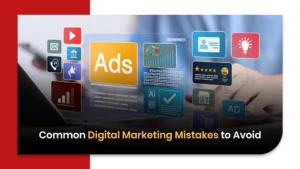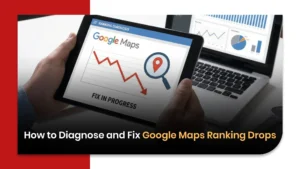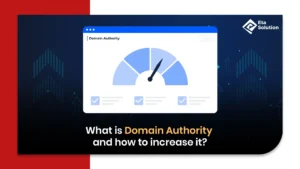
Organic Traffic in SEO: What It Is & How to Increase It
Imagine being able to attract thousands of qualified leads to your website each month without investing any money in advertising. One of the most enduring and effective digital growth channels is organic traffic. However, a lot of brands fail to see how to fully utilize it.
The most astute businesses in 2025, particularly those working with a reputable SEO company, are spending money on strategic SEO in order to establish long-term visibility, authority, and trust in addition to raising rankings.
Everything you need to know about Organic Traffic will be covered in this blog, including what it actually is and practical methods for boosting it that are supported by relevant data and case studies.
What Is Organic Traffic in SEO?
Users who discover your website through organic search engine results are known as organic traffic. They search on Google, click on a link, and arrive at your website. You don’t have to pay for every visitor, unlike paid traffic.
Strong SEO can only be generated by organic traffic, and there is no second thought about it. Technical soundness, link equity, content quality, and keyword strategy are all considered. These days, people are actively searching for what you have to offer because such traffic is reliable, cost-effective, and high-intent.
Why Should Organic Traffic Matter on Your Site?
Organic traffic is qualified, reliable, and scalable; it’s not just “free” traffic. Here lies the importance:
Increased ROI (return on investment):
Organic SEO builds efficiency over time, unlike paid advertising, where the longer you pay, the longer your exposure continues. Traffic from a page that ranks today could last for years. More than 53% of all Increase Website Traffic originates from organic search, according to BrightEdge.
Credibility and Trust:
Compared to sponsored listings, users are more likely to trust organic listings. Conversions may be directly impacted by the authority and dependability that a high organic rank conveys.
Cost-effectiveness:
Although search engine optimization necessitates an initial outlay of funds, there is no cost per click. If the pages are ranked for free, only then can our pages rank well. And this thing can make us more sustainable than PPC.
Long-Term Traffic Growth:
Organic SEO is one way by which you can cement your position on the search rankings, thus sustaining a steady stream of traffic growth. The more content you build and the authority you build on it, the more Google ranking will favor you. It constitutes one huge snowball.
Top Ways to Increase Organic Traffic

What Are the Techniques To Increase Organic Traffic?
Now, let me take you through 12 advanced and actionable techniques to increase SEO traffic in 2025:
1. Keyword Research
Sometimes, companies focus exclusively on high-volume keywords without realizing what searchers are looking for. Keyword research should include:
- Understand Intents: Pay attention to the intent behind the search. Someone who searches for “best email marketing software for startups” has a much higher buying probability than the one searching for “email marketing.”
- Use Advanced Tools: Unexplored keyword possibilities can be discovered using tools like SEMrush, Ahrefs, and Ubersuggest. When targeting long-tail keywords, chances are there due to a lesser competition. Examine the Gaps of Competitors:
- Examine the factors that bring website visitors to the websites of your rivals and find any holes in their content that you can fill.
- Professional opinion: Ranking for ten long-tail keywords with less competition often yields a higher return on investment than ranking for a single high-volume head term.
2. Optimization for pages
Website content construction and its presentation are subject to ranking by search engines.
- Descriptive Titles and Meta Descriptions: Click rates increase with descriptive titles and meta descriptions rich in keywords, but avoid duplicate phrases.
- Logical header elements: The H1 is to be used for titles; H2 or H3 is for subheadings, giving secondary keywords a natural flow.
- Internal link mapping: Linking to different related articles or service pages on your site helps better distribute link equity and boosts traffic.
- Image optimization: Use alt text with relevant keywords, and compress images for loading speed that can help accessibility and SEO.
3. Build Relationships
Google still considers backlinks as one of the top 3 ranking factors. By 2025, the value of backlinks will matter more than just quantity.
- Media with Guest Posts: Provide valuable and credible resources and quality content in your trade or industry. This gives you backlinks as well as establishes your brand as an authority in the industry.
- Digital PR or HARO: Websites like Help A Reporter Out can allow you to be quoted in larger publications. These links will matter from an SEO perspective.
- Don’t Forget Expired Links: We can use those tools that can show us broken links on websites. Website in the past, and reach out to the webmaster to get it updated.
- Linkable Assets: Provide valuable research, documents, or infographics that will naturally receive links without promotion needed.
4. Promote Content
Content is your primary means of attracting organic traffic and converting visitors into customers.
- Exceptional Blog Posts: Blog posts should answer questions, solve user problems, and give useful insights that users can apply in their lives.
- Case Studies and White Papers: add credibility and can often earn backlinks from industry-specific sites.
- Content Updates: If you use downloadable checklists or templates for updates, it can make users stay longer on your site.
- Content Clusters: Structure your content around larger topic themes and use the subtopic links to strengthen your topical authority.
5. Technical SEO
First of all, your website needs to be accessible to Search engines. And technical SEO is the only technique that enables them to do so. The faster the website loads with image compression, lazy loading, and script elimination, the more Google rewards it. Anything that loads less than 2.5 seconds would be great.
- Mobile-first: More than 63% of people in the USA use a phone to search. Your website will have to be functional on any device.
- Schema Markup: This boosts search engines’ understanding of the content, thereby improving the chances of rich snippets.
More Obvious and Crawlable Structure: URL structures must be obvious; sitemaps have to be updated. HTTPS has to be enabled as well.
6. Use Social Media
Social signals are not ranking signals but you can still get more visibility and backlinks.
- Content Amplification: Share your blog posts & resource links in front of more eyeballs on Reddit, X, or LinkedIn! You may get shares and secondary traffic.
- Connections from Influencers: Connect with influencers in your field so that you may better disperse your content across social media.
- Community Building: Engage people with comments, polls, or groups. Your interactions with your users will, in turn, generate more searches concerning your brand.
7. User Experience
The metrics used to assess user satisfaction, such as the bounce rate, time on page, and click depth, are now gaining importance in Google’s eyes.
- Simplified Navigation: Have users spot what they are looking for within three clicks. Drop-off rates are elevated with complex menus.
- Whatever it may be: schedule demos or simply read one more article, lead users with clear call-to-actions on what to do next.
- Designed to read: Bullet points, short paragraphs, and lots of whitespace can aid with increased scrolling.
8. Mobile Optimization
A mobile phone or tablet must be able to access sites and work perfectly, if needed, even through seamless responsive design that fits any screen size. Touch-Friendly Buttons: Never make a call-to-action small or overlapping in a way that makes it frustrating for mobile users.
Accelerated Mobile Pages (AMP): AMP makes your blog or news site fly and provides a great experience for mobile users.
9. Long Tail Keywords
These longer, more niche keywords are typically searched before clients are ready to buy.
Higher conversions: Someone searching for a “cheap CRM for dentists” is likely farther down the purchase path than someone searching for just “CRM.”
Nearly no competition since long-tail keywords are easier to rank for, and most large competitors ignore them.
Voice Search Friend: Most voice searches follow long-tail keywords.
10. Local SEO
If you are a local business, local SEO is a gold mine.
- Google Business Profile Optimization: Include geo-tagged images, hours of operation, and niche services.
- Customer Testimonials: Get clients who are happy to supply you with lengthy reviews. Respond to every review, even the bad.
- Local Keywords: Include local terms like “SEO company in Ahmedabad” in your content and metadata naturally.
11. Remove and Update Content
Some content, for instance, might not be considered prestigious authorities and kept available for an indefinite time.
- Updating links and data: Old information is not good for your authority and rankings. Any update should, therefore, replace the old data so as not to let the new one become outdated in the due course of acting to actually disable the old one without leaving it empty.
- Smartly combine Pool Content: Any thin content should be combined with deeper content to create a suitable interview replacement for these that stand a better chance.
12. Monitor and Analyze Results
Search Engine Optimization is time-consuming and something that needs measurement once repaired.
- Google Analytics 4: measurable KPIs – will be slow and difficult to fix.
- Google Search Console: Provides details on what query generated a click. Look to blacklist what content is poor or performance.
- SEO Tools Audit: SEMrush or Ahrefs. Sorrow learnt about backlinks and keywords.
How Organic Traffic Is Generated by Search Engines
To find the most reliable and pertinent pages for a particular query, search engines employ algorithms. This includes:
- Crawling: Finding information on the internet
- Indexing: Content organization according to subjects and applicability
- Ranking: Showing a top output according to parameters of over 200 factors, including engagement metrics, page speed, authority, and keyword usage. If your content meets the needs of users as well as Google, you will be further rewarded with traffic.
If your content meets both user needs and Google’s preferences, you will receive traffic.
Organic Traffic vs Paid Traffic: Key Differences

Best Tools for Organic Traffic Monitoring
- Google Analytics 4: To understand the user behaviour, traffic sources, and conversions.
- Google Search Console: Check keyword rankings, CTRs, and indexing-related issues.
- SEMrush/Ahrefs: Analyze domains, backlink profiles, and keyword gap to a deeper level.
- Ubersuggest: A really easy-to-handle interface, good for SEO performance metrics and suggestions for those.
Final Take
Organic traffic is a channel for an individual to foster growth, other than a content marketing metric. Having proper SEO strategies is great for visible factors that convert a person into leads, sales, and everlasting authority within his/her respective niche. It is short-term partnered with an expert SEO Company in Ahmedabad. Such SEO experts will definitely outshine all competition in search listing using their experience in the industry and implementation backed by data and insider knowledge, whilst some spend money on ads frivolously.
Proper attention has to be earned in Digital Marketing; it cannot be bought.
To quickly increase organic traffic, focus on improving your website’s SEO by updating old content with better keywords, fixing technical issues (like slow loading pages), and making your site mobile-friendly. Start creating helpful blog posts targeting long-tail keywords (phrases that are more specific and less competitive). Share your content on social media and in online communities where your target audience is active. Also, work on getting quality backlinks from other websites, as they boost your site’s authority. While organic traffic growth usually takes time, these actions can give you faster improvements if done right.
To get free traffic from Google, you need to make your website more search-engine friendly. This means doing keyword research and using those keywords naturally in your content, titles, and meta descriptions. Make sure your website is easy to navigate, fast, and mobile-responsive. Creating in-depth blog posts, how-to guides, and videos that answer people’s questions can help you show up in search results. Optimizing for featured snippets (like question-based content), using internal links, and adding fresh content regularly also help bring in free traffic from search engines without paying for ads.
Yes, blogging is one of the most effective ways to increase organic traffic. Every time you publish a new blog post with relevant keywords, you’re creating another opportunity for your website to appear in search results. Blogs let you answer common questions your audience is searching for, which builds trust and brings in targeted visitors. Google also favors websites that consistently publish fresh and valuable content. Over time, as your blog gains more pages and backlinks, it increases your site’s authority and visibility, helping you attract more people naturally through search engines.
In 2025, the most effective SEO techniques for driving organic traffic include focusing on search intent (understanding what users really want when they search), creating high-quality content that solves problems, and using AI tools to optimize your keywords and headings. Structured data (schema markup) helps search engines understand your content better, so you appear in rich snippets. Also, improving user experience (UX), like fast load times and easy navigation, helps boost rankings. Voice search optimization and targeting “People Also Ask” questions are also trending strategies that bring more organic traffic.
If your organic traffic isn’t growing, it could be due to several reasons. You might be targeting the wrong keywords, or your content may not be meeting user intent. Your website could have technical SEO issues like broken links, slow speed, or poor mobile experience that hurt your rankings. Also, if you’re not updating content regularly or getting backlinks from other websites, Google may not see your site as trustworthy or relevant. Sometimes, changes in Google’s algorithm can also affect your rankings. Regularly auditing your SEO performance and fixing these issues can help your traffic grow again.

What started as a passion for marketing years ago turned into a purposeful journey of helping businesses communicate in a way that truly connects. I’m Heta Dave, the Founder & CEO of Eta Marketing Solution! With a sharp focus on strategy and human-first marketing, I closely work with brands to help them stand out of the crowd and create something that lasts, not just in visibility, but in impact!

Common Digital Marketing Mistakes to Avoid

How to Diagnose and Fix Google Maps Ranking Drops

Google AI Mode and Its Impact on Search

